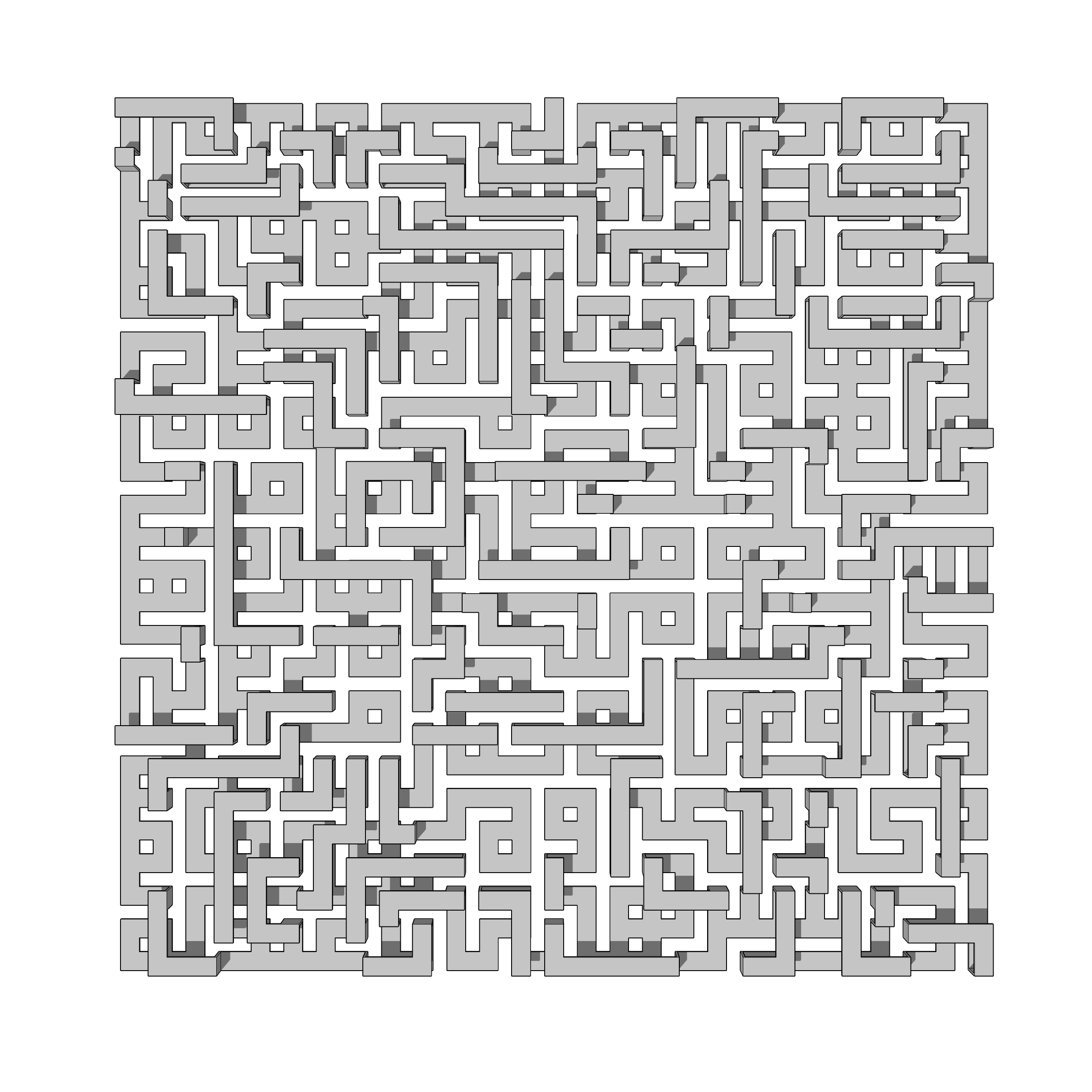Square Kufic
Square Kufic is a stylized version of the archaic Kufic script that features geometric, rectangular, quadrangular, and rectilinear elements. Together they form a composition of meaningful words.
The Name
The script possesses a distinctive style constructed from squares, giving rise to several names by which it is recognized, including Square Kufic, Bannai script, Checkered Kufic, and Geometric Kufic.
Journey
Over time, Square Kufic, as a form of expression, was further refined and expanded by skilled Muslim craftsmen and enthusiasts across numerous regions in Asia, the middle east and north Africa.
Thousand Years Old
Historical records of Square Kufic date back to the time after 1000 A.D. Square Kufic was originally created in Iranian architecture with bricks and tiles functioning as pixels.
Usage of Kufi
Artisans employ the Kufi calligraphic style, known for transforming the traditional curves into straight lines and sharp angles, alternating glazed and bare bricks to write out prayers or replicate geometric patterns.
Languages
It uses Arabic alphabet as the main base elements in the designs and can extend to all other languages which uses Arabic script as a writing languages with all the letters variations and alterations.
Emergence
Square Kufic initially emerged predominantly on religious structures, specifically mosque minarets, palaces gates, inner domes and grand architectural edifices and facades.
Inspiration
Although debatable, it is believed that Square Kufic calligraphy style was a result of a combination between the usage of Kufi script and an inspiration by Chinese seal script which follows same design rules.
Clay and Ceramics
The origins of Square Kufic can be traced back to its initial use with clay bricks. Over time, its artistic prowess flourished, becoming renowned for its exquisite depiction on ceramic panels.
What we know
Our understanding of Square Kufic relies on contemporary observations and analyses of historical designs, as there is currently no existing ancient written documentation that describes this style.
Readability is not Important
Square Kufic is decorative form of Islamic calligraphy which focuses on the visual form of the letters. Its primary purpose is to create an aesthetic form rather than communicate a message.
Follows a Grid System
Square Kufic follows a grid system. Usually it’s a 1×1 grid but in modern square Kufic, grids are now more flexible and can go wild with angular and irregular shape grid systems.
Absence of Diacritics
Although diacritics play an important role in Arabic writing system, they seem to be absent in Square Kufic. Even in modern SK artworks, they do not exist. You may try to be the first to use them!
Odd Squares
The rule of number of squares to be placed side by side is at least 3 Squares for each line, or 5, 7, 9.. etc. This rule cannot be broken or manipulated in any letter whatsoever.
Solid and the Void
The balance between the filled and the blank, the yes and the no, the solid and the void are the base philosophy of Square Kufic. Equal distribution of squares will result in a balanced artwork.
Dots are not Essential
Old Square Kufic had no dots in it although dots were introduced earlier to its first creation. Currently dots are being used in SK designs but they are still not an essential part of it.
Rotation of Letters
Letters can rotate in any direction 90°,180°,270°, clockwise or counterclockwise, As long as you’re following your own lead. This rotation will add an aesthetic look on the final artwork.
Designed in 2D and 3D
While old Square Kufic artworks were mainly visualized in 2D, modern SK artworks represented the same in 2 dimensional artworks giving the artform a new level of aesthetics.

Mamoun Sakkal
University of Washington, 2010
Square Kufic Calligraphy in Modern Art, Transmission and Transformation; Near and Middle Eastern Studies; PhD dissertation.

Tehnyat Majeed
Oxford University, 2006
A must read research paper titled: The phenomenon of the Square Kufic script: the cases of Ilkhanid Isfahan and Bahri Mamluk Cairo

Enis Timuçin Tan
University of Wollongong, 1999
A study of Kufic script in Islamic calligraphy and its relevance to Turkish graphic art using Latin fonts in the late twentieth century

Markus Ritter
Martin Luther University of Halle, 2008
Monumental Epigraphy in Iran: Paired Panels with Square Kufic Script and Saʿdī Verses in Safavid and Earlier Islamic Architecture

Joumana Medlej
Calligraphy Artist, 2021
Creative Arabic Calligraphy: Square Kufic as part of a series called Arabic Calligraphy for Beginners; Research article with deep focus on Square Kufic.

Randa Ismail Taha Negm
Alexandria University, 2022
The aesthetics of the Arabic Lettrism (square Kufic) and its role in designing the scenic design; Expressive Arts Division; Faculty of Fine Arts

Umberto Bongianino
Edinburgh University Press, 2023
Notes on Square Kufic Epigraphy in the History of Morocco; In book: Inscriptions of the Medieval Islamic World; Book chapter; Col. Péter T Nagy.

Asghar Javani
Art University of Isfahan, 2016
Analyzing the Kufic Writings of Qavam al-Din Shirazi’s Architectural Ornamentation in Gazirgah, Herat; Collaboration with Dr Bahman Feizabi

Filiz Tavşan
Karadeniz Technical University, 2017
The Impact of the Eras and Varieties of Kufic art, on the Placement of Kufic in Architectural Design; Trends and Issues Proceedings on Social Sciences
